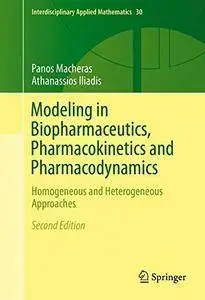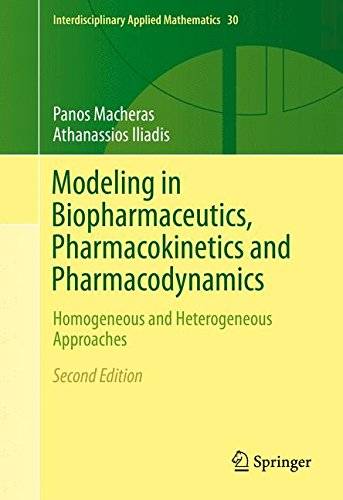Modeling in Biopharmaceutics, Pharmacokinetics and Pharmacodynamics: Homogeneous and Heterogeneous Approaches, Second Edition
Springer | Interdisciplinary Applied Mathematics | April 15, 2016 | ISBN-10: 3319275968 | 483 pages | pdf | 9.46 mb
Springer | Interdisciplinary Applied Mathematics | April 15, 2016 | ISBN-10: 3319275968 | 483 pages | pdf | 9.46 mb
Authors: Macheras, Panos, Iliadis, Athanassios
Updated state-of-the-art information on biopharmaceutic, pharmacokinetic, and pharmacodynamic modeling
New chapters on Bioequivalence and Fractional Pharmacokinetics, contributed by leaders in the field
New sections on time-varying models and interface models
Appeals to both graduate students and researchers in pharmacology, pharmaceutical sciences, bioengineering, and physiology
Covers the theory with specific examples behind all three under the perspective of heterogeneous processes while also treating the current state of the art in applied and theoretical BPP
The state of the art in Biopharmaceutics, Pharmacokinetics, and Pharmacodynamics Modeling is presented in this new second edition book. It shows how advanced physical and mathematical methods can expand classical models in order to cover heterogeneous drug-biological processes and therapeutic effects in the body.
The book is divided into four parts; the first deals with the fundamental principles of fractals, diffusion and nonlinear dynamics; the second with drug dissolution, release, and absorption; the third with epirical, compartmental, and stochastic pharmacokinetic models, with two new chapters, one on fractional pharmacokinetics and one on bioequivalence; and the fourth mainly with classical and nonclassical aspects of pharmacodynamics. The classical models that have relevance and application to these sciences are also considered throughout. This second edition has new information on reaction limited models of dissolution, non binary biopharmaceutic classification system, time varying models, and interface models. Many examples are used to illustrate the intrinsic complexity of drug administration related phenomena in the human, justifying the use of advanced modeling methods.
This book will appeal to graduate students and researchers in pharmacology, pharmaceutical sciences, bioengineering, and physiology.
Reviews of the first edition:
"This book presents a novel modelling approach to biopharmaceutics, pharmacokinetics and pharmacodynamic phenomena. This state-of-the-art volume will be helpful to students and researchers in pharmacology, bioengineering, and physiology. This book is a must for pharmaceutical researchers to keep up with recent developments in this field." (P. R. Parthasarathy, Zentralblatt MATH, Vol. 1103 (5), 2007)
"These authors are the unique (or sole) contributors in this area that are working on these questions and bring a special expertise to the field that is now being recognized as essential to understanding biological system and kinetic/dynamic characteristics in drug development…This text is an essential primer for those who would envision the incorporation of heterogeneous approaches to systems where homogeneous approaches are not sufficient to describe the system." (Robert R. Bies, Journal of Clinical Pharmacology, Vol. 46, 2006)
Number of Illustrations and Tables
156 b/w illustrations, 1 illustrations in colour
Topics
Mathematical and Computational Biology
Pharmacology / Toxicology
Biophysics and Biological Physics
Biomedical Engineering
Biochemistry
Applications of Mathematics
Click Here to Buy the Hardcover from Springer
Click Here for More books



